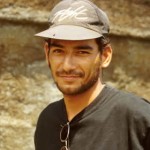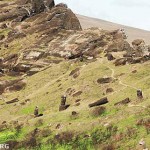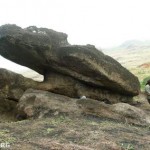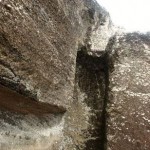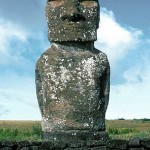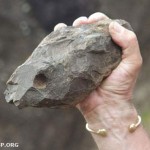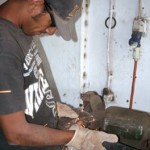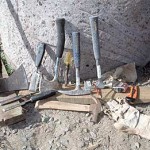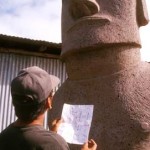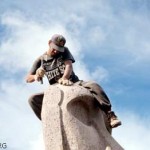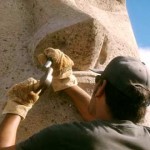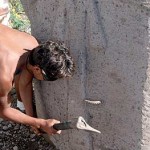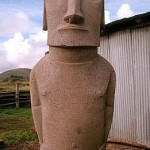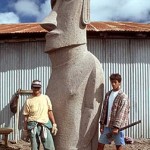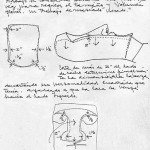The Rapanui carver’s perspective: Notes and observations on the experimental replication of monolithic sculpture (moai)
April 19th, 2009
This is an abbreviated version of a paper originally published in Pacific Art: Persistence, Change and Meaning (Herle et al. eds. Adelaide: Crawford House, 2002 for citations and notes).
Real Time and Individual Energy
Experimental archaeology is the systematic approach used to test, evaluate and explicate method, technique, assumption, hypothesis and theory at all levels of archaeological research. This paper employs a replicated moai to describe relationships between real time and individual energy, and explores the subjective artistic dimension of moai carving during an experiment lasting 32 8-hour days. It is drawn from journal notes taken by Van Tilburg from October 1997 to May 1998, by Arévalo from December 1988 to July 1999, and on written correspondence in English and Spanish between the authors.
Carvers and Craving
On Easter Island (Rapa Nui) ethnographic data related to monolithic stone carving methods, production techniques and carvers are scant. In the 1800s some Rapanui persons were distinguished by their relationships to ancestors who had been famed stone carvers. Katherine Routledge, co-leader of the Mana Expedition to Easter Island, 1913-1915, collected some names of statues that were said, in actuality, to be names of carvers, and believed them to have veracity.
Read the rest of this entry »
Tags: Cristian Arévalo Pakarati, Rano Raraku
Posted in 1990s, Sculpture Embellishment, Transport Experiment |
 English
English  Español
Español 